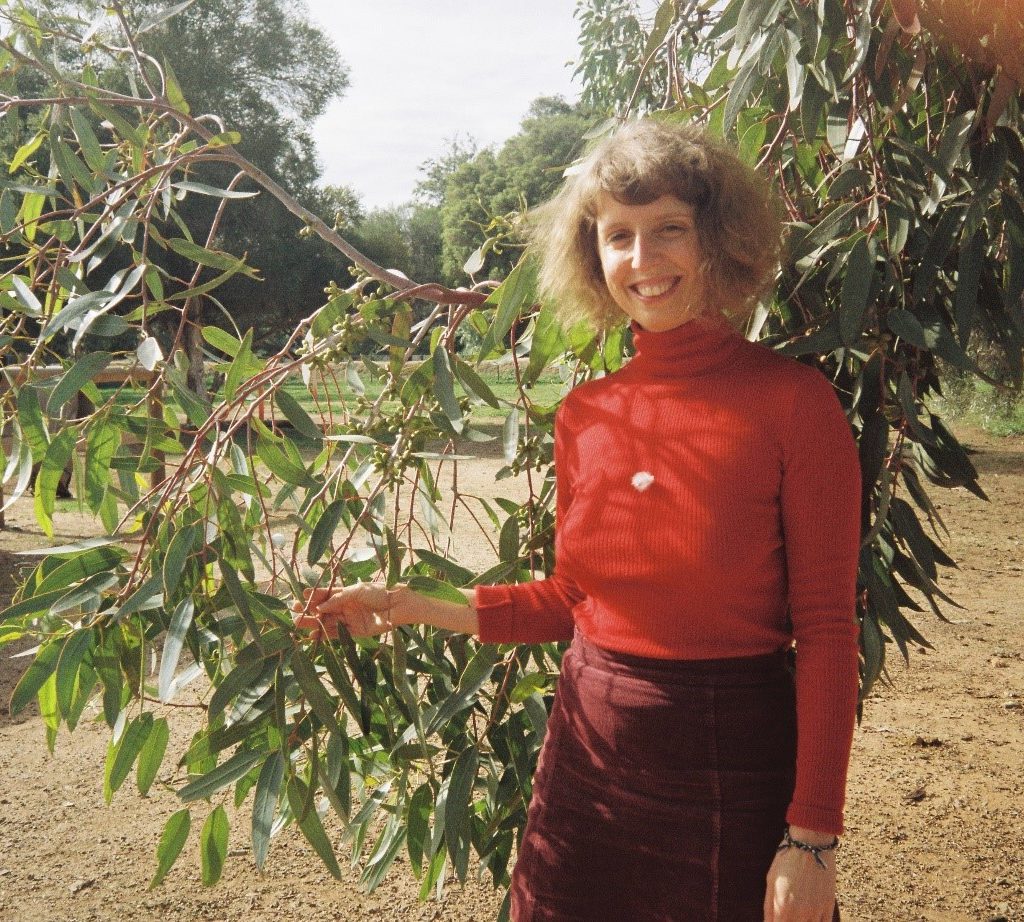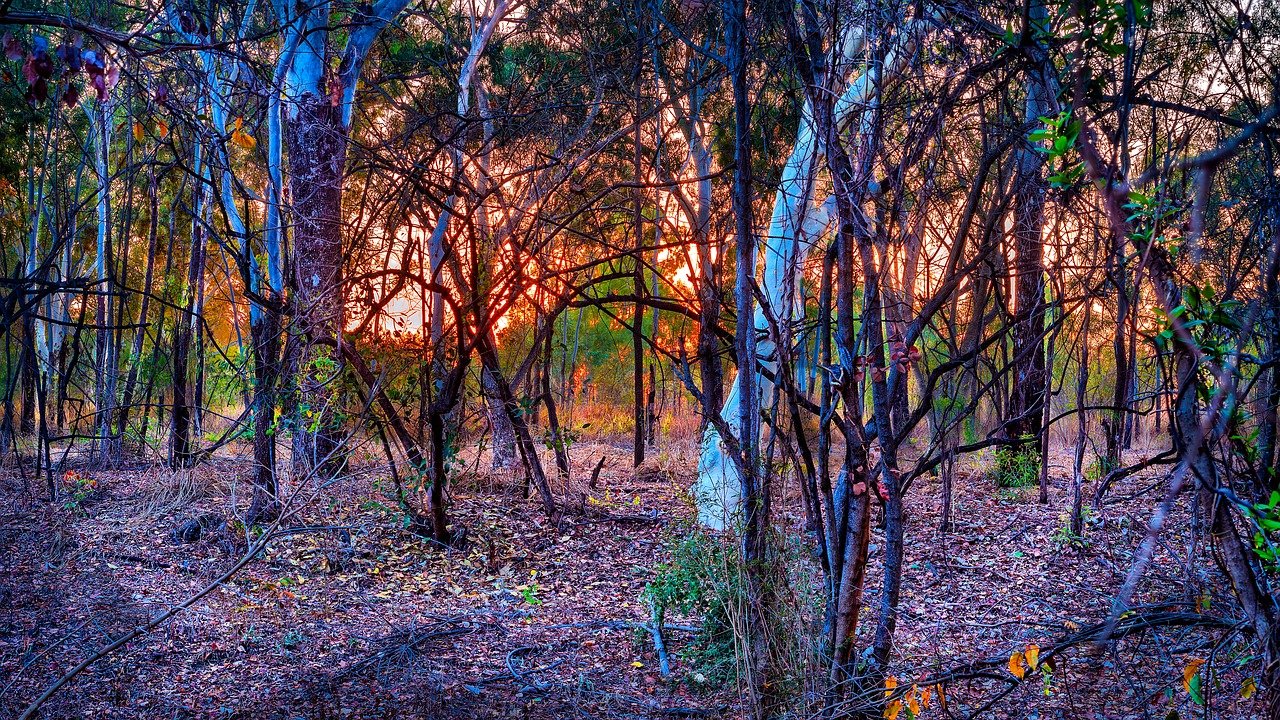My Relationship with the Natural Environment

I spent some of my earliest years on a dairy farm in central Victoria, running around the paddocks, climbing in haystacks, riding around on the quad bike with my siblings and roaming the farm on my own as a small child. As I grew up and moved to the Gold Coast hinterland, creeks, hills and mountains became the new norm, as was splashing around in rock pools with my friends, sitting in the creek reading magazines and eating lollies to keep cool during the summer holidays. Moving to the suburbs as a teenager meant that there was less connection to natural spaces, and the wildness of my younger years gave way to other ways of being. However, the occasions that I did immerse myself in natural spaces were significant to me. I was taken back by the beauty and wildness of secluded beaches around Byron Bay that I could only get to by walking. I was taken back then at how my straightened hair curled in the salt water, how my soft belly felt the suns warmth and how raw and alive that made me feel. I was struck by the smell of the rainforests around Springbrook. In awe of the vast valleys of Lamington National Park. Playful in the sandbanks of Hastings Point foreshore at family gatherings.
Connecting in a deeper and more intimate way to the natural environment was a beautiful part of finding myself and my independence as I began going to rural festivals after moving back to Victoria. These pieces of country would become sacred sites for me and my loved ones. Slowly, my relationship with nature became something I couldn’t do without.. I yearned to be fed by it and it became an abundant resource for me, always providing me with more than I could ever need just by being surrounded by it, touching it, being held by it. This relationship transformed to be more reciprocal as I moved in to a sharehouse that aimed to move in more of a flow with the natural environment – self sufficiency and environmental activism and awareness being central values of my new home. A solo road trip through Central Australia solidified my philosophies of living in alliance with natural cycles, and the craving to make a deep dive in to spaces not bound by city. Moving to the Dandenong Ranges was a deep dive for me.
The Impact of Climate Change
Knowledge of climate change had a huge impact on me. I moved to a home in the forest, and then proceeded to spend most of the year following the Australian federal election, frozen with climate grief and eco-anxiety. I experienced daily despair at political climate inaction, the increase of natural disasters and the extinctions that were already happening.
There are three things that have helped me express how I feel.
1) Tangibly engaging with the natural environment such as walking through forest, resting on the earth, foraging edible weeds, making art and practical items out of foraged materials.
2) Talking (and crying) with and being supported by people who had come to a point of understanding and acceptance of the climate crisis and had made meaning out of their experience, sharing that meaning-making with me.
3) Engaging in climate centred activism such as blockades, marches and volunteering with community environmental organisations.
I am most troubled by the fact that precious ancient ecological systems are being destroyed to the point of no return, and this majesty will not be able to be enjoyed by those that come after us. I guess this speaks to my love and care for the biosphere, which likely begun as a child on the farm. As an adult I began to appreciate it through my own explorations – and this thread joins to the present day moment.
Over time, I’vechanged my behaviour to engage in more pro-environmental actions. This includes tree planting, minimising consumption and waste, supporting the divestment movement, driving less, composting, financially supporting and volunteering with grass roots environmental organisations, removing parasitic plants from trees, foraging weeds, and sharing with people around me my research and my engagement with nature in an attempt to influence them to undertake more pro-environmental behaviours.
I’m now physically healthier through active intentional engagement with the more-than-human world – by breathing in fresh air, walking in the forest, taking time every day to spend time with the trees and birds and sky rather as well as my computer. I feel more psychologically grounded, balanced and regulated doing all of these things, and nature offers so many further gifts of metaphor, mirror, flow, synchronicity and meaning. I’ve changed my career direction due to the relationship I have settled in to with the more-than-human world, and I anticipate that endeavour will continue to positively impact the natural world, including humans.

What keeps me going
There are a number of things that give me strength in the face of the climate crisis. My commitment to eco-social work practice, Earths capacity to regenerate with or without humans, the principle of impermanence, close proximity to ‘wild’ places, the global pro-environment community, the fire in my belly fuelled by the destruction of Earth and commodification of resources and political greed blocking systemic reforms, First Nations peoples and their wisdom and resilience, and the more than human world more generally.
These strengths come from reading about and listening to First Nations peoples, to scholars in the fields of eco-social work, environmental philosophy and eco-psychology, from dedicated people in the community and from witnessing the power of environmental activism across the world.
Nature in all of its ferocity, power, wonder, softness, destruction, mystery, intelligence, love and majesty is the source of my commitment to it and it provides the nourishment for me every day to keep on going. I go for a bush walk everyday, forage weeds, tend to plants in the wild and my own, look at the stars and stand in the mist – it is every part of the cycle and the cycle itself that is the source of my commitment.
People in my networks have offered kind reflections on my commitment to this work and my studies. Of how I can hold space for people experiencing eco-anxiety and eco-grief. Of how I am living my pro-environmental behaviours and in doing so giving offering ways of how others can do so. Of how I can work in this space and not feel burnt out by the heaviness of the issues.
If I could do anything to change things in a big way, I would implement comprehensive, federally supported and community developed drawdown initiatives across every country in the world, particularly those who produce high levels of Co2. I would also amplify the voices of First Nations peoples across the world to establish treaties and create First Nations assemblies to site alongside existing governments. To work towards these actions, I hope to research drawdown and link in with Australian groups doing this work.
I continue to show gratitude to the earth through my pro-environmental behaviours. Through telling the ferns and the birds and the tree that I love them and how beautiful they are. Through thanking the Earth with (most!) meals. By writing poetry about her. By dedicating my life to her. By continuing to foster our relationship. By caring for myself, by honouring my cycles, by loving my nature.
If this story has touched you in some way, we invite you to send a message back to the storyteller. Please go to our ‘Facing the Climate Crisis’ project page for details.
